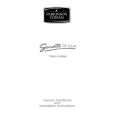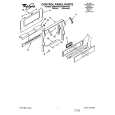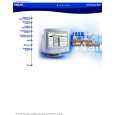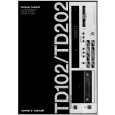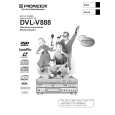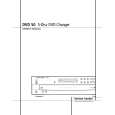|
|
|
Productos
|
|
Información
|
|
Destacado
|
|
|
 |
|
|
No hay comentarios de productos.
DVD50
harman/kardon
Revised Operating Instructions
Most of the benefits provided by this DVD 50 upgrade are changes to the internal software that update the unit for improved operation and, as such, they do not require any user intervention. Two of the new or improved features do bring new commands or functions to the unit. Track Skip Forward/Skip Reverse During CD Playback Once the Software Upgrade is installed, the Track Skip Forward/Skip Reverse function works in the same manner as most conventional CD players. � � When the Chapter/Track Skip Reverse Button is pressed, the CD will return to the beginning of the current track being played. To move to the start of the previous track, press the Chapter/Track Skip Button TWICE.
Progressive Scan Image Modes The powerful video decoding and processing engine that is at the heart of the DVD 50 is able to provide a variety of modes to help compensate for the differences inherent in the way DVDs are recorded. In order to enable easy compatibility with the widest range of discs, the factory preset is an automatic mode that best determines the proper processing algorithms. However, the specific way in which each disc is digitally encoded, and the differences in film-originated material as opposed to programs originally shot on video, may occasionally create unanticipated video artifacts that the Auto mode does not compensate for. With the DVD 50 Software Upgrade you are now able to manually select from five different video reconstruction modes to best suit the specific way in which an individual disc was recorded. If you notice shimmering or streaking in the video image while the progressive scan playback system is activated, switching the Video mode may provide a more satisfying image. To change the Video mode, follow these steps: � � � Observe the picture by putting the disc into play. Press and hold the Check Button on the remote for two to three seconds until a message appears in the upper left corner of the screen, reading MODE 2. To change to a different mode, wait until the MODE message disappears, and then immediately press and hold the Check Button for three seconds. The next mode will take effect when you see another MODE indication message. We suggest that you let the new mode play for a few seconds so that you may look at it with continuous program material. If you wish to change the mode again, repeat this procedure. Depending on the nature of the video transfer and encoding on an individual disc, you may have to cycle through all five of the modes to find the one that best suits that disc. Once you find the best mode, no further action is required.
�
Notes About Image Modes: � � Image Mode selection compensates for the way in which specific variations in individual discs are handled when the DVD 50 is in the Progressive Playback mode. This function is not available for standard composite, S-Video or component video playback and has no impact with those connections. Due to the variation in video-encoding technologies, program source material and other conditions relating to the creation of DVD programs, it is possible that some discs may contain digital information that prevents a totally satisfactory picture from being displayed. This is not caused by either the disc or the DVD 50, but is due to the wide latitude available in the DVD standards which may occasionally result in incompatibilities beyond the capability of a playback deck. When the Image mode is changed, the newly selected mode will remain in effect until the unit is turned off. Should you wish to change the mode for a different disc before the unit is turned off, follow the instructions shown above. To ensure compatibility with the greatest number of discs without the need for an adjustment, the DVD 50 will always return to the Automatic Detection mode (MODE 1) when the unit is turned on.
42
�
|
|
 |
> |
|
